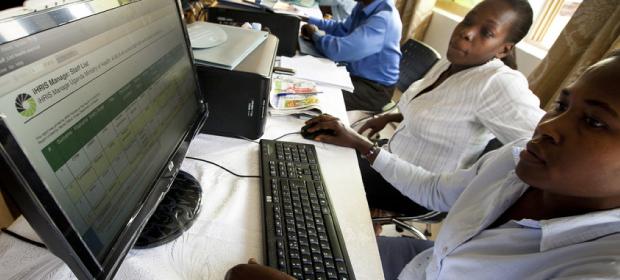Where We Work
See our interactive map


Picture this: the Ministry of Health asks the registrar at a nursing and midwifery council to provide the number of nurses currently licensed in the country. The council keeps folders of license application forms, sorted only by year. Some forms are missing or are not yet filed. The registrar stops everything and manually goes through the files, calculating the number of nurses available in the country. It takes a month.
But the number is inaccurate. It doesn’t take into account the nurses who migrated to other countries or those who have died or otherwise left the profession. It doesn’t consider the health workers that are double-counted because they registered at one level and then re-registered after obtaining a higher qualification. Even if the number were accurate, the registrar can’t tell where the nurses were trained, what kind of training they received, where they are practicing, or if they’re up-to-date on their license and education requirements—essential information to understand health workforce challenges and start planning to address them.
This is but one example. Similar challenges are faced by health workforce managers and planners at a country’s ministry of health, national and regional hospitals, and district facilities.
Health leaders in 12 countries are now using the iHRIS software (pronounced eye-ris) to track and manage over 475,000 health workers. Before getting iHRIS, most of these countries used manual filing systems, and health workforce data were difficult to access, aggregate, and analyze.
Click on the blue dots below to learn how 12 countries are using iHRIS and the number of health workers each is tracking (as of April 2012).

Now, information at the click of a button
iHRIS is free, open source software specifically designed for use by ministries of health, professional health councils, and health facilities to understand and strengthen the health workforce. IntraHealth International, through the USAID global Capacity Project, launched the first iHRIS product in 2007, when IntraHealth recognized the need for accurate and accessible health workforce data at the country level. iHRIS is making the difference between not knowing where to start solving workforce challenges and getting started.
Two years ago in Nigeria, the nursing council used 18 paper registries, some with many volumes, to track information on the country’s qualified nurses and midwives. Now, Nigeria has the largest iHRIS installation with records on over 240,000 qualified health workers. Six years ago in Uganda, the registrar of the nursing and midwives council described aggregating information in their paper-based system as “a nightmare.” Now, Uganda tracks and manages data on over 69,000 health workers in various systems built on iHRIS.
Countries implementing iHRIS can access data for decision-making, including information about health workers’ distribution, age, gender, training, and specialty—all at the click of a button.
» Part 2: Customizable, open source software for health managers



